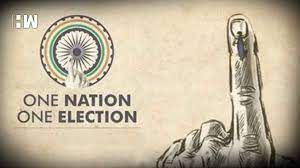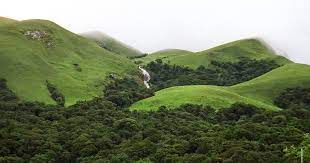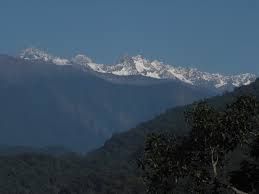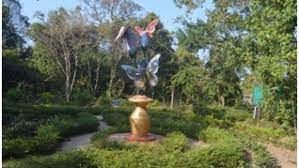UPSC Daily Current Affairs- 20th March 2023 | Current Affairs & Hindu Analysis: Daily, Weekly & Monthly PDF Download
GS-I
Shri Shri Harichand Thakur
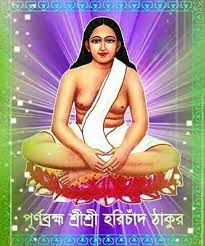
Why in News?
Prime Minister Narendra Modi paid tribute to Sri Sri Harichand Thakur on his Jayanti recently.
About Shri Shri Harichand Thakur:-
- Shri Shri Harichand Thakur worked among the untouchable people of the Bengal Presidency.
- He came from a family of Vaishnavite Hindus.
- He founded a sect of Vaishnavite Hinduism called Matua.
- This was adopted by members of the Namasudra community.
- Namasudra community: were then also known by the pejorative name of Chandalas and considered to be untouchable.
- Philosophy: The sect was opposed to caste oppression and, inspired the community towards education and social upliftment.
- According to historian Sekhar Bandyopadhyay, Thakur “experienced Atma darshan or self-revelation, through which he realized that he was the incarnation of God himself, born in this world to bring salvation to the downtrodden”
Source: PIB
Plastic rocks

Why in News?
Recently, plastic rocks have been found on the remote Brazilian island of Trindade.
About Plastic rocks:-
- They are made of sedimentary granules and other debris held together by plastic.
- These rocks are called “plastiglomerates” because they are made of a mixture of sedimentary granules and other debris held together by plastics.
- They are considered a potential marker of the Anthropocene.
- Anthropocene: an informal epoch of the Quaternary proposed by some social scientists, environmentalists, and geologists.
- Plastiglomerate could potentially form a marker horizon of human pollution on the geologic record.
- They may survive as future fossils.
- Plastiglomerate may also conceivably be formed in plastic-polluted regions affected by lava flows or forest fires.
- They have been found on the surface as well as beneath the sand.
Source: The Hindu
GS -II
One Nation, One Election
Why in News?
The issue of holding simultaneous elections to the Lok Sabha and the State Assemblies has been referred to the Law Commission for further examination.
About simultaneous elections:
- The simultaneous election in India is the holding of elections to Lok Sabha and State Assemblies together once in a 5 year under which voters in a certain constituency vote for both Lok Sabha and State Assembly on the same day itself.
- It does not mean that elections across the nation for Lok Sabha and State Assemblies need to occur on a single day.
- It is based on the principle of “One Nation, One Election”.
- Notably, simultaneous elections were held in India until 1967 that was disrupted because of premature dissolution of state assemblies.
Arguments in favour of Simultaneous Elections/ ONOE
- Reduction in cost: Multiple elections at different times lead to a huge cost to the exchequer in the form of lost time, labour and financial costs.
- There are significant costs involved in the conducting of elections including the movement of security personnel, diversion of state machinery towards presiding over the elections and other similar costs.
- Simultaneous polls will boost voter turnout.
- Engagement of security forces: Deployment of security forces is normally throughout the elections and frequent elections take away a portion of such armed police force which could otherwise be better deployed for other internal security purposes.
- Impact on social fabric: Frequent elections perpetuate caste, religion, and communal issues across the country as elections are polarising events that have accentuated casteism, communalism, and corruption.
- Hampering values of democracy: Smaller parties with less capital and money for election expenditure could not compete equally with larger parties with deep pockets.
- This hampers equity and equality in a democratic process. With simultaneous elections, the election expense will be reduced thus allowing for more level playing field during the campaign times.
- Focus on populist measures: Frequent elections will impact the focus of governance and policymaking as it forces the political class to typically think in terms of immediate electoral gains rather than focus on long-term programs and policies.
- Regular elections hamper the delivery of essential services due to the engagement of public servants, including a large number of teachers, in the election process.
Arguments against Simultaneous Election:
- Local issues will fade out: There are concerns that simultaneous elections will impact the behaviour of voters, as national and local issues may get mixed up and distort priorities, giving an unfair advantage to national parties, at the expense of regional parties.
- Difficult scheduling: It may be difficult to find a suitable time slot, given the geographical and administrative diversity relating to weather, agricultural cycle, exam schedule, religious festivals, and public holidays, in a country as vast as India.
- Logistical challenges: Holding simultaneous elections once in five years may also face logistical challenges.
- For the free and fair conduct of the elections, security forces need to be deployed in large numbers.
- Given the current strength of security personnel, this may be a challenging task.
- Midterm dissolution cannot be controlled: Even if the terms of the Houses are in sync as a one-time measure, it will still need an adequate legal safeguard in place to avoid mid-term dissolution and protect the simultaneous elections cycle.
- Need a lot of amendments: Amendments to the Constitution would encompass Articles 83 (Duration of Houses), 85 (Dissolution of the Lok Sabha), 172 (Duration of state legislatures), 174 (Dissolution of state legislatures), 356 (Failure of constitutional machinery), and the Tenth Schedule (to ensure that all disqualification issues arising from defection are decided by the presiding officer within six months).
- Change in the basic structure of the Constitution: Amending Article 356 – which deals with ‘Provisions in case of failure of constitutional machinery in State’, or President’s rule – will alter the basic structure of the Constitution and will impinge on federalism.
- International examples not suitable for India: The international examples – like Sweden, Belgium, and South Africa – cannot be compared to a country like India, whose population and area are many times that of the smaller countries.
- Concern over feasibility: If a central government that is made up of a coalition faces a situation where an ally pulls out, and the government falls, elections will have to be conducted in all state governments, too, within six months, even if there is no issue in those states and vice-versa.
- One aspect that could offset the savings would be the doubling of expenses on electronic voting machines (EVMs).
- Model code of conduct: Argument about MCC paralyzing policy-making is overstated and untrue – it only stops ruling parties from using the government machinery for electoral gains.
Way forward
Simultaneous election is an idea whose time has come. However, since the issue is concerned with the federal structure of the Constitution, it needs to be discussed and debated properly across the political spectrum to assuage the concerns of regional parties. This will make it easier to implement the idea in the country.
Ideally, the ‘one nation, one election’ system should reduce the amount of time, energy and resources invested in the conduct of polls. If simultaneous polls do reduce the duration of conducting polls, political parties will have ample time to address national issues and enhance governance.
Source: Economic Times
Global Terrorism Index 2023
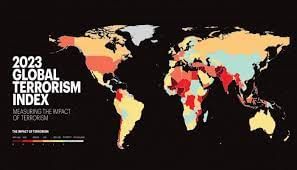
Why in News?
The Institute for Economics and Peace (IEP) recently corrected its report related to Global Terrorism Index (GTI) 2023 after the Communist Party of India (CPI) was wrongly included in the list of deadliest terror groups of 2022.
About Global Terrorism Index:
- It is published annually by the Institute for Economics and Peace (IEP), a global think tank headquartered in Sydney, Australia
- The index provides a comprehensive summary of the key global trends and patterns in terrorism over the past 15 years.
- The report ranks 163 countries (99.7% of the world's population) on the impact of terrorism.
- Indicators: Include the number of terrorist incidents, fatalities, injuries, and hostages.
- The index is produced using data from TerrorismTracker of Dragonfly-- which provides event records on terrorist attacks since January 1, 2007 -- and other sources.
- Highlights of Global Terrorism Index 2023:
- Afghanistan retains the top spot on the list of the country impacted by terrorism. Afghanistan has topped for the fourth consecutive year.
- India ranked 13th on the index, marking only a marginal decrease from the previous year.
- Pakistan saw the second-largest increase in terror-related fatalities globally last year, with a total of 643 dead.
- Military people made up at least 55% of all casualties of terrorism.
Source: Indian Express
GS-III
Conservation and Protection Western Ghats
Why in News?
Recently, the Supreme Court directed the Environment Ministry to file its counter-affidavit to a petition seeking judicial intervention to protect the Western Ghats from destruction.
About Western Ghats:
- The Western Ghats, also known as the Sahyadri Hills, are well known for their rich and unique assemblage of flora and fauna.
- It is recognized as a UNESCO World Heritage Site.
- Western Ghats passes through Gujarat, Dadra and Nagar Haveli, Maharashtra, Goa, Karnataka, Kerala, Puducherry and Tamil Nadu.
Importance of Western Ghats:
- Biodiversity hotspots: Western Ghats have high level of biological diversity and endemism and is recognized as one of the world’s eight ‘hottest hotspots’ of biological diversity.
- It is estimated that 52% of tree species and 65% of amphibians found in western ghats are endemic.
- Water shed: The Western Ghats are one of the four watersheds of India, feeding the perennial rivers of the country.
- The major river systems starting in the Western Ghats are the Godavari, Kaveri, Krishna and Tungabhadra rivers.
- Weather pattern: The Ghats act as a key barrier, intercepting the rain-laden monsoon winds and influencing the Indian monsoon weather pattern. They have a major role in groundwater recharge.
- Western Ghats with their forest eco systems sequester large amount of carbon.
- It is estimated that they neutralise around 4 million tonnes of carbon every year- around 10% of emissions neutralised by all Indian forests.
- Hydropower: The rivers flowing through Western Ghats are important source of hydropower generation.
Threats to Western Ghats:
- Mining: The mining activities have grown rapidly and often in violation of all laws, resulting in serious environmental damage and social disruption.
- Unsustainable mining has increased vulnerability to landslides, damaged water sources and agriculture, thus negatively affected the livelihoods of the people living in those areas
- Hydropower Projects: Large dam projects in Western Ghats have resulted in huge environmental costs.
- Extraction of Forest Produce: Human communities living within and adjacent to protected areas in the Western Ghats are often dependent on it for extraction of forest produce to meet a diversity of subsistence and commercial needs.
- Plantations: Agroforestry systems in the Western Ghats are replacing native endemic species with tea, coffee, rubber and monocultures of various species, including the recently introduced oil palm.
- Encroachment by Human Settlements: Human settlements occur both within and outside protected areas all across the Western Ghats and represent a significant threat.
- Livestock Grazing: Livestock grazing within and bordering protected areas is a serious problem causing habitat degradation across the Western Ghats.
Committees and Recommendations
Western Ghats Ecology Expert Panel (WGEEP) Report
The report was submitted in 2011.
- Madhav Gadgil, ecologist and panel chairman pointed to the degradation suffered of Western Ghat.
- The report had designated the entire hill range as an Ecologically Sensitive Area (ESA).
- It had classified the 142 taluks in the Western Ghats boundary into three Ecologically Sensitive Zones (ESZs).
- It also recommended no new dams based on large scale storage be permitted in the region.
- Participatory process for development related activity involving the Gram Sabhas in these zones.
- The Ministry of Environment, Forest and Climate Change opposed disclosure of the report stating that it could affect the economic and scientific interests of the six States.
- The successive State governments opposed it stating that most of its suggestions were impractical.
- The Centre later appointed a high level working group on Western Ghats led by K. Kasturirangan, in August, 2012 to examine the Gadgil report.
- Kasturirangan Committee
- To give special attention to the preservation of the precious biodiversity.
- Also ,to consider the rights, needs and development aspirations of the local and indigenous people.
- It identified only 37% or 59,940 sq. km of the Western Ghats in the 6 States as ESAs.
- Around 4,156 villages along the region were identified as ESAs
- On the basis of the criterion that they had 20% or more of ecologically sensitive area within their boundary.
- Nearly 123 such villages were identified as ESAs in Kerala, provoking political and religious protests.
Oommen V. Oommen Committee
- Following the advice of the Kasturirangan Committee
- The area of 9,993.7 sq. km to be considered ESAs in Kerala as against the 13,108 sq. km area.
- It also recommended that the inhabited areas, plantations and agricultural lands in the Western Ghats region be excluded from the scope of ESA.
Union Environment Ministry Draft notification of 2014
- Notified a total of 56,825 sq. km in the Western Ghats as ESA instead of the original 59,940 sq. km recommended by the Kasturirangan Committee.
- The final notification remains pending despite a directive by the Principal Bench of the National Green Tribunal.
- that there is no justification for continued delay merely because the States have sought exclusion of the area from the Eco Sensitive Zone.
Way Forward
- Sustainable Growth : A balance between conservation efforts and development should be sought.
- Exempting areas of very high susceptibility from any types of constructions.
- Nature Based Solution : Increasing the vegetative cover as a first line of defence during a natural calamity.
- Government Policies: An intelligent public policy response is the need of the hour. Policies must adhere to the recommendations of reports.
- Avoiding mindless consumerism: United Nations Development Programme, which had pioneered the human development approach, has proposed a Planetary Pressures Adjusted Human Development Index.
- Awareness among various stakeholders : Living in the Anthropocene, we need to guard against any further damage to the natural world.
Source: The Hindu
Namdapha National Park
Why in News?
Recently, logs and a truck were seized from the core area of Namdapha National Park and Tiger Reserve in Arunachal Pradesh’s Changlang district.
About Namdapha National Park:-
- It is located in the Changlang district of Arunachal Pradesh.
- It is the largest protected area in the Eastern Himalaya biodiversity hotspot.
- It was established as a national park in 1983.
- It was declared a Tiger Reserve in the same year 1983.
- It is also on the Tentative List of UNESCO World Heritage Sites in India.
- It is India’s easternmost tiger reserve.
- It is near the international border with Myanmar.
- Its adjoining areas, are flanked by the Patkai hills to the south and southeast and by the Himalayas in the north.
- The area lies close to the Indo-Myanmar-China trijunction.
- Namdapha is in fact the name of a river originating in the park and it meets the Noa-Dehing river.
- Noa-Dehing river is a tributary of the Brahmaputra and flows in a North-South direction in the middle of the National Park.
- The park is located between the Dapha bum range of the Mishmi Hills and the Patkai range.
- It is the fourth largest national park in India.
- The first three are Hemis National Park in Ladakh, Desert National Park in Rajasthan, and Gangotri National Park in Uttarakhand.
- Vegetation: The vegetation is characteristic of tropical evergreen forests (Tropical Rain Forests).
- Fauna: elephants, black bears, Indian Bison, several species of deer, reptiles and a variety of arboreal animals.
- Important bird species: White-winged Wood Ducks, a rare and endangered species, the great Indian hornbills, jungle fowls and pheasants.
- It is the only park in the World to have the four Feline species of big cat namely the Tiger (Panthera Tigris), Leopard (Panthera Pardus), Snow Leopard (Panthera Uncia) and Clouded Leopard (Neofelis Nebulosa).
- It is also famous for Critically Endangered species like the Namdapha flying squirrel, species that was last spotted in 1981.
- Hoolock Gibbons, the only ‘ape’ species found in India is found in this National Park.
Other Protected Areas in Arunachal Pradesh:-
Pakke Wildlife Sanctuary.
About Mouling National Park:-
- It was established in 1972.
- It was the second to be established in Arunachal Pradesh, after Namdapha National Park.
- This park has a total land area of about 483 square kilometres and is located west of the Dihang-Dibang biosphere reserve.
- Mouling Peak, the park’s highest peak, mmakesthis an undulating area.
- Rivers such as the Siyom run through the park’s western border.
- Mouling National Park offers the sight of various conserved animals including different types of mammals and birds.
About Kamlang Wildlife Sanctuary:-
- Kamlang Wildlife Sanctuary is situated in the South-Eastern part of the Lohit District of Arunachal Pradesh.
- The name comes from the River Kamlang, which flows through the Sanctuary and joins the Brahmaputra
- The local inhabitants are Hishmi, Digaru, and Mizo.
- They Claim themselves as descendent of “King Rukmo” of “Mahabharat”.
- This Wildlife Sanctuary contains all four big cats (Tiger, Leopard, Clouded Leopard and Snow Leopard).
- It also has the population of endangered spp. like Hollock gibbon, Sllorisesies, Leopard cat, Himalayan palm civets etc. The famous pilgrimage centre, “Parasuram Kund” can be approached from Wakro throughout the year at a distance of 20 km.
- Fauna: This Sanctuary has animals like, Elephant, Tiger, leopards, and Hoolock gibbons. Stump-tailed macaque, Capped Langur, Boar, Civets, Deer, Hornbills, Giant and flying squirrels etc.
- Flora: Canarium resiniferous (Dhuna), Terminalia chebula (Hillika), Gmelina arborea (Gamari),Ammora wallichi (Amari) etc.
About Itanagar Wildlife Sanctuary:-
- Itanagar Reserve Forest was declared as Itanagar Wildlife Sanctuary.
- It has a geographical boundary with Pam River in the East, Pachin in the South, Neorochi on the North-East and Chingke stream in the North.
- The vegetation of this Sanctuary can be classified as tropical semi evergreen and wet evergreen.
- The most common bamboos found in these forest areas are (1) Bambusa palida (Bijuli) and (2) Dendrocalamus hamiltonii (Kako).
- Tree species: (1) Duabanga grandiflora (Khokan) (2) Amoora Wallichii (Aman) (3) Toona ciliata (Poma) (4) Magnolia spp. (Sopa) (5) Schima Wallichii (Makrisal) and Castonopsis indica (Hingori) etc.
- Grass : succharam procerum, S.Spontamum, Andropogon assimillis, phramites karka, Allpinia allugus.
- Fauna:. Animals like Elephants, Tigers, Panthers, Sambar, Barking Deer and Bears were quite common.
- Hornbills were very common bird to sight. But now it is a chance to sight a Hornbill.
Source: The Hindu
Butterfly EcoPark
Why in News?
The Butterfly EcoPark at Chottakhola, Tripura, close to the Trishna WildLife sanctuary is the first butterfly park in the northeast and is now a major attraction for tourists from different parts of the country and also Bangladesh.
About Butterfly EcoPark:
- It is nestled in a village near the India-Bangladesh international border in Tripura’s South district.
- According to wildlife and environment experts, butterflies are deemed to be indicators of a good ecological balance and healthy nature
- The park is near the endangered bison park at Trishna wildlife sanctuary and Indo-Bangla Maitri Park to commemorate the Bangladesh liberation war.
Key facts about the Trishna wildlife sanctuary
- Trishna wildlife sanctuary is located in the state of Tripura.
- Flora: The vegetation of the sanctuary consists of four types of forest – the tropical semi-evergreen forest, the east Himalayan lower Bhanar Sal, the Moist mixed deciduous forest and the Savanah woodland.
- Fauna: The Indian Gaur (Bison), Deer, Hooklock Gibbon, Golden langur, Pheasants, Lalmukh Bandar, Wild Boar, Wild Cat, Leopard etc.
Source: Indian Express
|
38 videos|5283 docs|1116 tests
|
FAQs on UPSC Daily Current Affairs- 20th March 2023 - Current Affairs & Hindu Analysis: Daily, Weekly & Monthly
| 1. What is the significance of GS-I, GS-II, and GS-III in UPSC exams? |  |
| 2. What are the key topics covered in GS-II paper of UPSC exams? |  |
| 3. How can candidates prepare for the GS-III paper of UPSC exams? |  |
| 4. What is the role of current affairs in the GS-I paper of UPSC exams? |  |
| 5. How can candidates improve their answer writing skills for the GS papers in UPSC exams? |  |

